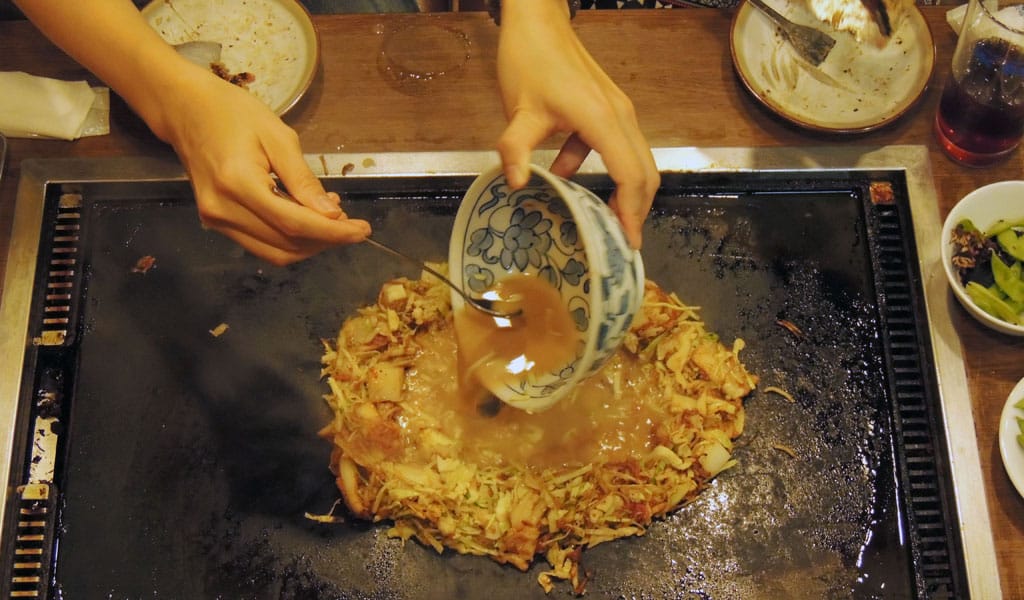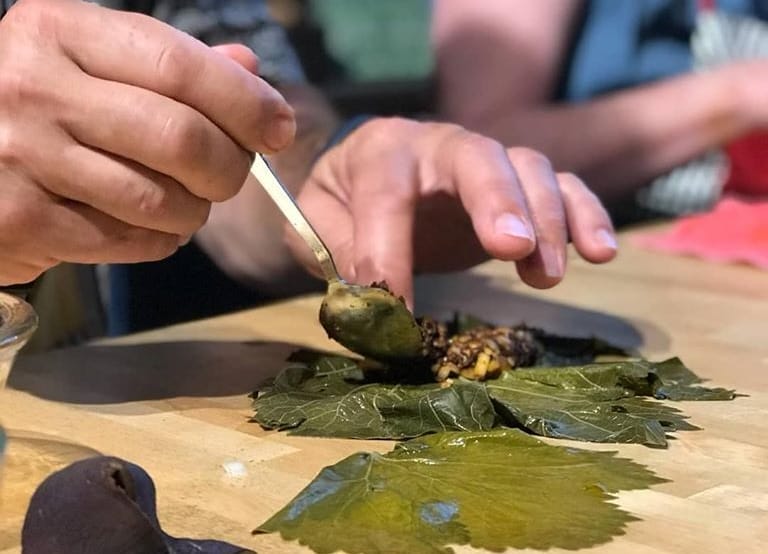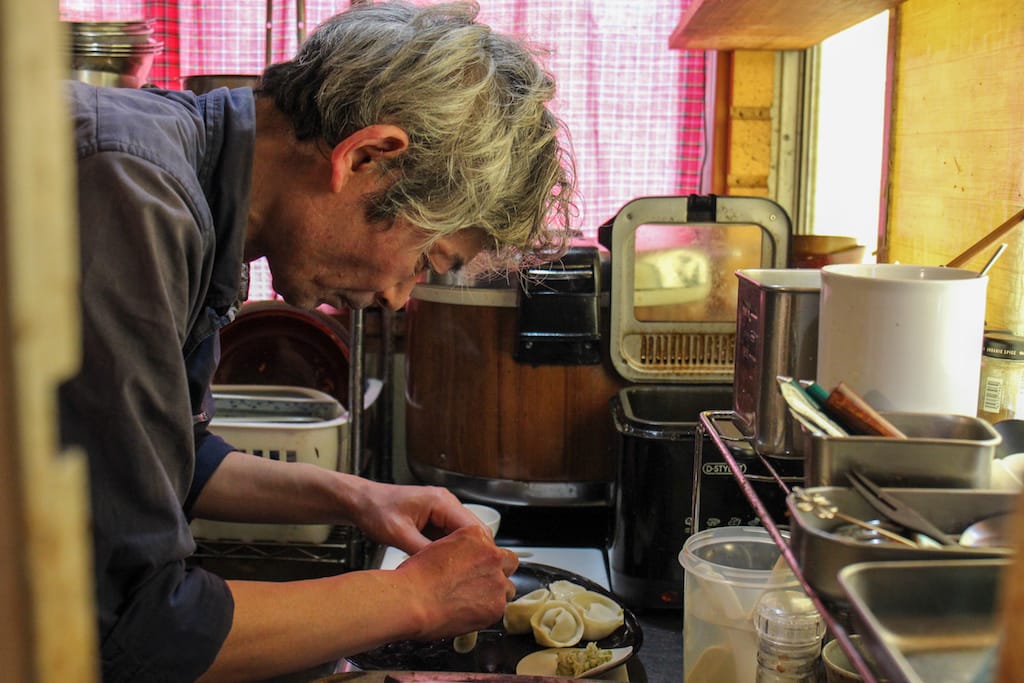Japan is well known for its variety of national dishes, as well as local specialties claimed by individual regions and cities. Tokyo, which boasts more Michelin stars than any city in the world, is a natural nexus for these disparate eats, as well as more international fare.
It may come as a surprise, then, that Tokyo itself only really has one true homegrown specialty: monjayaki. The baseline ingredients for monjayaki, often referred to simply as monja, are nothing more than wheat flour and dashi, that ubiquitous Japanese broth made from kombu (kelp) and shavings of katsuobushi, dried, fermented and smoked skipjack tuna. Cabbage is also common enough to be considered a third basic ingredient.
The spartan dish became popular in postwar Tokyo when many ingredients were scarce and city dwellers had to make do with what was at hand and additional ingredients were added when they could be had. Over the decades monja has developed a proud and proletarian flare. The bayside neighborhood of Tsukushima, where more than a hundred monja restaurants vie for supremacy, is ground zero for monjayaki. Despite the basic recipe’s seeming redundancy, monja’s potential is limited only by what one can imagine adding to the simple batter.
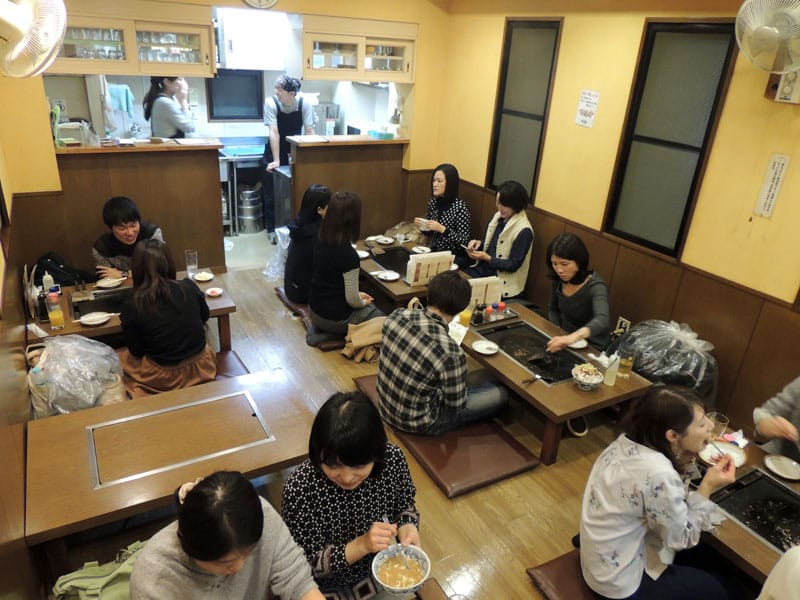
On our most recent visit we made our way down the central Showa Era arcade past gaggles of tourists and strolling couples before cutting down a dark alley to a less trafficked street. Here we found a pack of other monja devotees already queued, but breezed past them to claim the table we reserved earlier in the day.
Kondo Honten has the singular distinction of being Tokyo’s oldest monjayaki restaurant, and its reputation as the uncontested best has grown enough that it’s expanded into two neighboring three-story buildings and claimed every floor. Our assiduous hostess led us back outside and across the street to one such annex, and when the door opened we breeched a wall of heat and odor heavy with indeterminate spices coming off hot, black griddles at the center of every table.
Cooking monja is an art unto itself.
Upon reaching our low table on the second floor, our hostess handed us a 20-gallon plastic bag before heading back down to usher more diners to their meals. Our coats went into the bag to save them from the restaurant’s overpowering scent (though the clothes on our backs would long be a reminder of the meal afterwards).
Monja shops distinguish themselves by the quality of their broth, and Kondo Honten adds curry powder and a hodgepodge of other spices for its own unique recipe. We ordered the shop special (squid, octopus, shrimp, beef, corn and noodles) to start and another with kimchi, mochi (rice cake), cheese and crispy wonton noodles to follow. The dishes came out fast, as the cooking happens at the table itself. Our waitress offered to cook them for us, but as practiced hands at making monjayaki we were happy to decline.
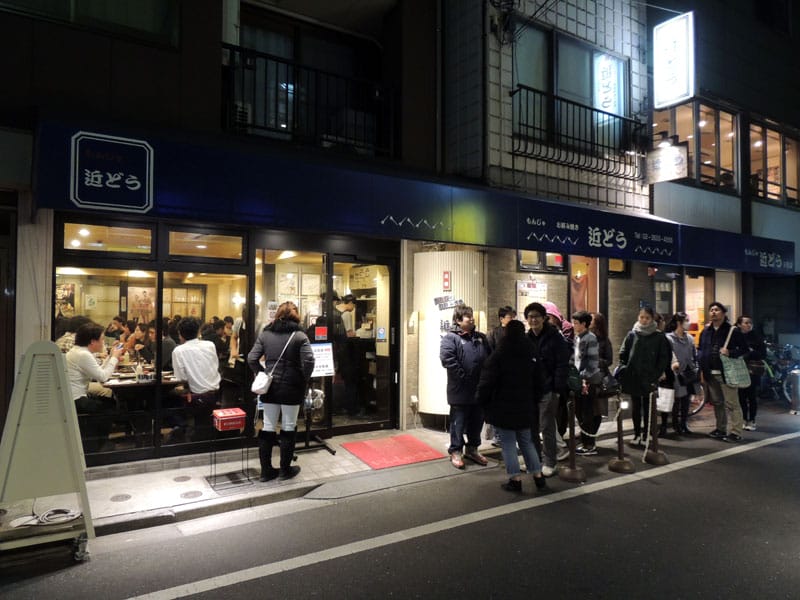
Cooking monja is an art unto itself. First, we used two large spatulas to form a ring with the secondary ingredients, the meat hissing on the grill, the mochi beginning to soften and melt. Once the ring was formed, we poured the thin batter into the middle of the ring so the wall of ingredients kept it from running. Next, we used a long spoon to stir the soupy batter into the wall of ingredients as it congealed. Soon everything became a pliable mass that we spread out evenly over the grill to finish. Finally, only minutes after ordering, we used smaller steel spatulas to scrape piping-hot monjayaki from the grill and into our mouths. The coagulated monja had the consistency of melted cheese, the smell of a hot grill and the taste of a home-cooked meal.
While not the most beautiful food to look at, monjayaki has a satisfying and familiar appeal. The notions of kitchen and dining space are collapsed in a monja restaurant. The diners become chefs, and friends become closer over the shared experience of preparing and eating a meal together. In every respect, it’s a feast that transcends its constituent parts to transform into something else entirely.
This article was originally published on May 8, 2017.
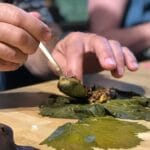 February 17, 2016 Shop, Cook, Feast: A Hands-On Culinary Adventure
February 17, 2016 Shop, Cook, Feast: A Hands-On Culinary Adventure
Quick Bite: After shopping for ingredients in one of Istanbul’s most food-centric […] Posted in Istanbul February 25, 2021 Chabuzen
February 25, 2021 Chabuzen
Daiji Takada, owner of Chabuzen, peeks out over the counter from the kitchen, which has […] Posted in Tokyo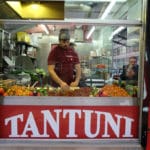 February 1, 2017 Toros
February 1, 2017 Toros
(Editor's Note: In honor of the immigrants and refugees who have made their new home a […] Posted in Elsewhere, Berlin
Published on April 20, 2019
Related stories
February 17, 2016
IstanbulQuick Bite: After shopping for ingredients in one of Istanbul’s most food-centric neighborhoods, we’ll teach you how to cook six of our favorite Turkish recipes from all over Turkey in this Istanbul cooking class – dishes like Circassian chicken, stuffed eggplant from southeastern Turkey, Aegean-style mincemeat pastries and more. Behind every great Turkish cook is…
February 25, 2021
TokyoDaiji Takada, owner of Chabuzen, peeks out over the counter from the kitchen, which has about a meter-long strip of standing space for one at most. The interior of this narrow restaurant, tucked away in the very fringes of the hip neighborhood of Shimokitazawa in western Tokyo, isn’t much more spacious. Two low tables on…
February 1, 2017
Berlin(Editor's Note: In honor of the immigrants and refugees who have made their new home a better place for us all, this week we are running some of our favorite archived stories about those who have left a culinary mark on their adopted land.) In Berlin, there is no shortage of meatless options, and vegetarians can even rejoice in a…







































